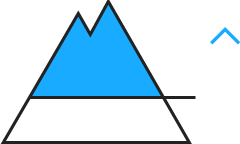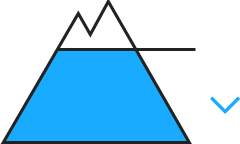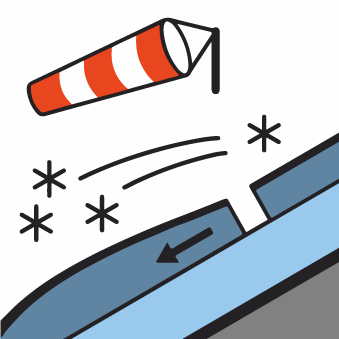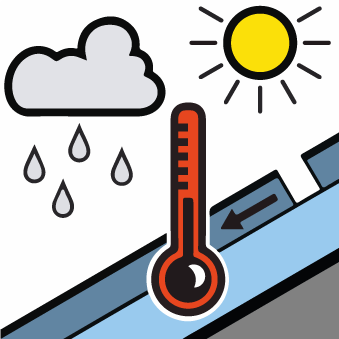
Danger level
 | 2200m |
|  |
|  | ||||
|  |
|  |

The fresh wind slabs must be evaluated with care and prudence in all aspects. Wet snow requires caution.
The large quantity of fresh snow of the last few days and the wind slabs formed by the wind can be released by a single winter sport participant in all aspects above approximately 2200 m. Medium-sized and, in isolated cases, large avalanches are possible. At intermediate altitudes these can release the wet old snow as well. The prevalence of avalanche prone locations and likelihood of triggering will increase with altitude. As a consequence of warming during the day and the solar radiation, the likelihood of slab avalanches being released will increase in particular on sunny slopes.
On steep grassy slopes occasionally large gliding avalanches are possible. This applies especially on steep sunny slopes below approximately 2600 m, including on steep shady slopes below approximately 2200 m. Areas with glide cracks are to be avoided.
As a consequence of warming during the day and solar radiation numerous moist loose snow avalanches are to be expected as the day progresses, even medium-sized ones. This applies in particular on extremely steep sunny slopes.
Snowpack
dp.6: cold, loose snow and wind
dp.2: gliding snow
A lot of snow fell in the last few days over a wide area. This applies in particular at high altitudes and in high Alpine regions. Fresh and somewhat older wind slabs are lying on soft layers in all aspects at elevated altitudes. The large quantity of fresh snow of the last few days and in particular the sometimes deep wind slabs are poorly bonded with the old snowpack in all aspects above approximately 2200 m.
The rain gave rise to thorough wetting of the snowpack below approximately 2200 m.
Outgoing longwave radiation during the night will be quite good over a wide area. The surface of the snowpack will freeze to form a strong crust only at high altitudes and will soften during the day. This applies in particular on sunny slopes at intermediate and high altitudes, as well as on shady slopes below approximately 2200 m.
Tendency
The avalanche danger will persist.






